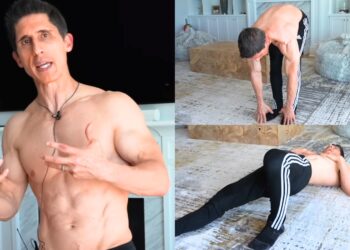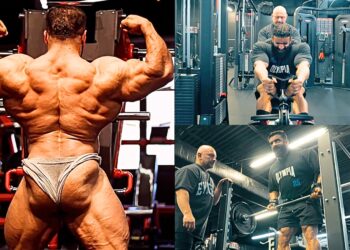Bodybuilders the world over are constantly looking for the perfect program to build muscle and strength. Get two lifters together, and the question of training splits and favorite workouts will invariably arise.
Many believe that the perfect workout is out there somewhere, and if they find it, bodybuilding success is all but guaranteed.
Unfortunately, there is no secret workout waiting to be discovered. In fact, a lot of bodybuilders train very differently and yet achieve similar results.
For example, six-time Mr. Olympia Dorian Yates did no more than a few intense sets per muscle group per week, and old-school champ Mike Mentzer did the same.
In contrast, other bodybuilders, like legends Arnold Schwarzenegger and Ronnie Coleman, used higher-volume approaches for their workouts, training each muscle with many different exercises and sets.
The point is that almost any workout will produce results if you train intensely and consistently.
Level Up Your Fitness: Join our 💪 strong community in Fitness Volt Newsletter. Get daily inspiration, expert-backed workouts, nutrition tips, the latest in strength sports, and the support you need to reach your goals. Subscribe for free!
That said, if you repeat the same workout too often, your body will adapt to its demands and stop growing. We call this a plateau or a rut. Like eating the same meal over and over, eventually, your body gets bored of repeatedly doing the same thing, and stops growing and getting stronger.
Needless to say, training plateaus are VERY frustrating!
The best way keep progressing is to change your workout every 6-12 weeks. There is no need to change your program more often than this, and program hopping is almost as bad as sticking with the same plan after it’s stopped working. However, when it comes to busting through plateaus, change is good.
In this article, we discuss the FST-7 workout method, which is designed to smash through plateaus and get even the most stagnated, stubborn body part growing again.
What is FST-7?
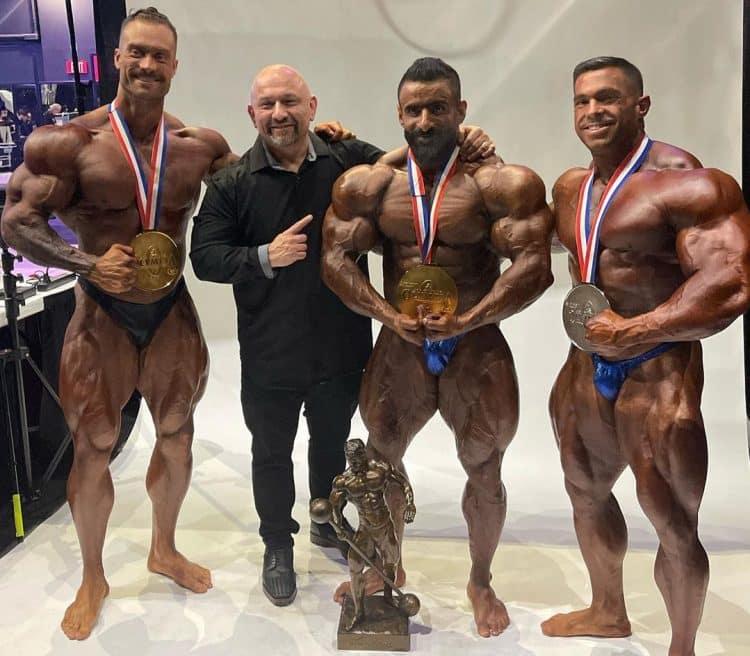
FST7 is a bodybuilding system invented by bodybuilding guru Hany Rambod. For over 20 years, Rambod has worked with some of the biggest names in amateur and professional bodybuilding, including Jay Cutler, Chris Bumstead, Phil Heath, Hadi Choopan, and Dana Linn Bailey. He’s also helped Dwayne “The Rock” Johnson get in shape for some of his movies.
FST-7 is short for Fascia Stretching Training, and the seven refers to the number of sets performed during the final part of each training session. FST-7 is not a single workout. Instead, it’s a training method you can apply to almost any bodybuilding program.
As such, it’s a very flexible approach that you can use as and when you need it, i.e., to overcome a training plateau or bring up a lagging body part.
Fascia basics
Before we delve into the nuts and bolts of FST-7, we first need to discuss fascia. After all, stretching your fascia is the main purpose of the FST-7 training method.
Fascia is the thin but tough layer of connective tissue that surrounds and links all your muscles, bones, ligaments, tendons, organs, and blood vessels. It’s the structural architecture that literally holds your body together.
Regarding your muscles, it’s theorized that tight fascia can limit muscle growth. Think of fascia like a bag that can only hold so-much contents. Some people believe that stretching the fascia means more space for muscle growth.
FST-7 involves doing a high volume of training for a single muscle group, engorging it with blood. This, Rambod believes, stretches the fascia from within. Do this often enough, and the fascia will expand to allow greater muscle growth. Bodybuilders refer to this increase in blood volume as getting pumped.
While there is no reliable scientific evidence to support the FST7 method, research does support the concept of fascia stretching (1).
Also, many bodybuilders believe that the pump is an integral part of the muscle-building process. It’s not a giant leap to assume that getting a pump stretches and expands the fascia. At its heart, FST-7 is a pump-inducing training method.
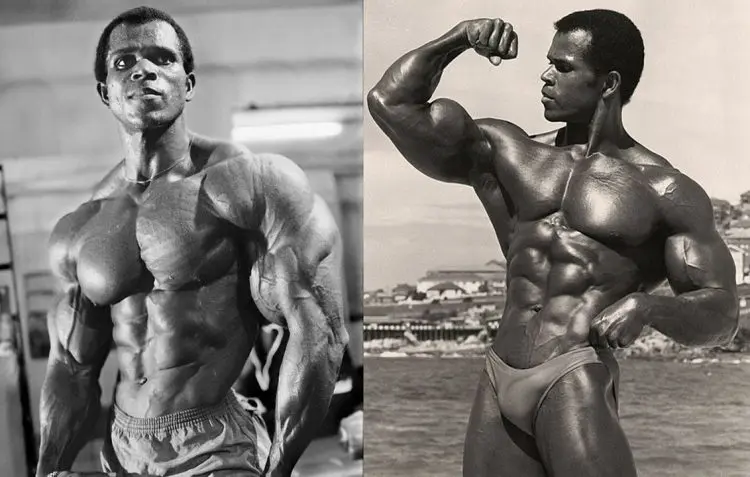
Old-school bodybuilders like Serge Nubret were famous for training for the pump. Judging by his incredible physique, this type of training definitely works. Rambod has also had great success with this method, which, despite the lack of research, strongly suggests that FST-7 is an effective training method.
How to Do FST-7
The FST7 system combines several training styles into one workout to develop your muscles to their fullest potential. Essentially, it’s a power-building/bodybuilding hybrid with a very high-rep finisher. This broad spectrum of training intensities and reps ensures that a) all available muscle fibers are stimulated and b) the target muscle is pumped full of blood to expand the fascia and allow greater hypertrophy.
According to Rambod, you should follow this sequence for your FST-7 workouts:
- Heavy weight compound exercise, e.g., 3 x 6-8 reps (long rests)
- Moderate weight compound or isolation exercise, e.g., 3 x 8-12 reps (medium rests)
- Light weight isolation exercise, e.g., 7 x 12-15 reps (short rests)
Rest 2-3 minutes between sets of the first exercise, 1-2 minutes between sets of the second, but no more than 30-45 seconds for the last exercise.
The theories behind FST-7 are not new; bodybuilders have been combining heavy, low-rep sets with high-volume, high-rep “pump” sets for decades. This type of training is often called powerbuilding. However, Hany Rambod was the first person to formalize these training methods into one easy-to-understand system and to give it a catchy name!
Sample FST-7 Workouts
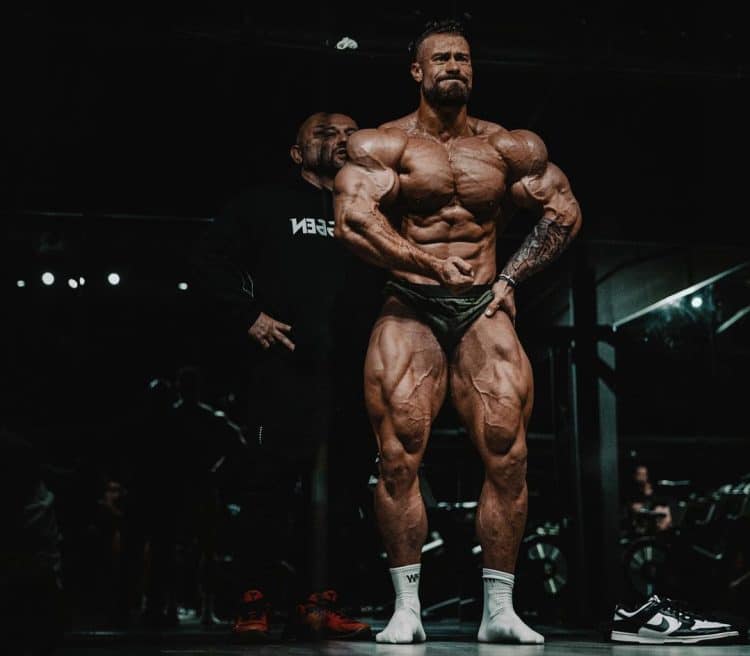
You now have all the information you need to design your own FST-7 workouts or apply this training method to your current routine. However, we know many people prefer to follow pre-written programs, so here are some sample FST-7 workouts to try.
As always, remember to warm up before your workouts to reduce your risk of injury and ensure your muscles and joints are ready for what you’re about to ask them to do. You can read more about warming up for strength training here.
Workout 1 – FST-7 Chest
| # | Exercise | Sets | Reps | Recovery |
| 1 | Bench press | 3 | 6-8 | 2-3 minutes |
| 2 | Incline dumbbell press | 3 | 8-12 | 1-2 minutes |
| 3 | Seated chest press | 3 | 8-12 | 1-2 minutes |
| 4 | Pec deck | 7 | 12-15 | 30-45 seconds |
Workout 2 – FST-7 Back
| # | Exercise | Sets | Reps | Recovery |
| 1 | Weighted pull-up | 3 | 6-8 | 2-3 minutes |
| 2 | Bent-over row | 3 | 8-12 | 1-2 minutes |
| 3 | Single-arm row | 3 | 8-12 | 1-2 minutes |
| 4 | Lat pulldown | 7 | 12-15 | 30-45 seconds |
Workout 3 – FST-7 Shoulders
| # | Exercise | Sets | Reps | Recovery |
| 1 | Military press | 3 | 6-8 | 2-3 minutes |
| 2 | Seated dumbbell press | 3 | 8-12 | 1-2 minutes |
| 3 | Face pull | 3 | 8-12 | 1-2 minutes |
| 4 | Dumbbell lateral raise | 7 | 12-15 | 30-45 seconds |
Workout 4 – FST-7 Arms
| # | Exercise | Sets | Reps | Recovery |
| 1 | Dip | 3 | 6-8 | 2-3 minutes |
| 2 | Barbell curl | 3 | 6-8 | 2-3 minutes |
| 3a | Preacher curl | 3 | 8-12 | 1-2 minutes |
| 3b | Skull crusher | |||
| 4a | Cable curl | 7 | 12-15 | 30-45 seconds |
| 4b | Triceps pushdown |
Exercises 3a and 3b and 4a and 4b are to be performed as supersets. Do the first exercise (a) and then immediately do the second exercise (b). Rest for the allotted time and then repeat the pairing.
Workout 5 – FST-7 Biceps
| # | Exercise | Sets | Reps | Recovery |
| 1 | Barbell curl | 3 | 6-8 | 2-3 minutes |
| 2 | Seated dumbbell curl | 3 | 8-12 | 1-2 minutes |
| 3 | Concentration curl | 7 | 12-15 | 30-45 seconds |
Workout 6 – FST-7 Triceps
| # | Exercise | Sets | Reps | Recovery |
| 1 | Close grip bench press | 3 | 6-8 | 2-3 minutes |
| 2 | Skull crusher | 3 | 8-12 | 1-2 minutes |
| 3 | Single-arm triceps pushdown | 7 | 12-15 | 30-45 seconds |
Workout 7 – FST-7 Legs
| # | Exercise | Sets | Reps | Recovery |
| 1 | Squat | 3 | 6-8 | 2-3 minutes |
| 2 | Romanian deadlift | 3 | 6-8 | 2-3 minutes |
| 3a | Leg press | 3 | 8-12 | 1-2 minutes |
| 3b | Cable pull-through | |||
| 4a | Leg extensions | 7 | 12-15 | 30-45 seconds |
| 4b | Leg curls |
Exercises 3a and 3b and 4a and 4b are to be performed as supersets. Do the first exercise (a) and then immediately do the second exercise (b). Rest for the allotted time and then repeat the pairing.
Workout 8 – FST-7 Quadriceps
| # | Exercise | Sets | Reps | Recovery |
| 1 | Front squat | 3 | 6-8 | 2-3 minutes |
| 2 | Hack squat | 3 | 8-12 | 1-2 minutes |
| 3 | Lunge | 3 | 8-12 | 1-2 minutes |
| 4 | Leg extension | 7 | 12-15 | 30-45 seconds |
Workout 9 – FST-7 Hamstrings
| # | Exercise | Sets | Reps | Recovery |
| 1 | Deadlift | 3 | 6-8 | 2-3 minutes |
| 2 | Hip thrust | 3 | 8-12 | 1-2 minutes |
| 3 | Good morning | 3 | 8-12 | 1-2 minutes |
| 4 | Leg curl | 7 | 12-15 | 30-45 seconds |
FST7 Workout Guidelines
There is more to an effective workout than just doing the prescribed exercises, sets, and reps. How you perform the program is just as important as what you do. So, follow these guidelines to get the most from FST-7.
Limit your use of FST-7 to one body part per week
Do NOT try and do all these workouts in one week. That would be overkill for most people. They’re high volume and high intensity, which is a recipe for overtraining.
Instead, choose one workout for a lagging body part, and use it for four 4-6 weeks to bring it up to par. Maintain your regular workout program for the remaining body parts. Then, when you are satisfied with your progress, use FST7 on a different muscle or muscle group.
Rotating body parts in this fashion will help reduce the risk of overtraining and burnout.
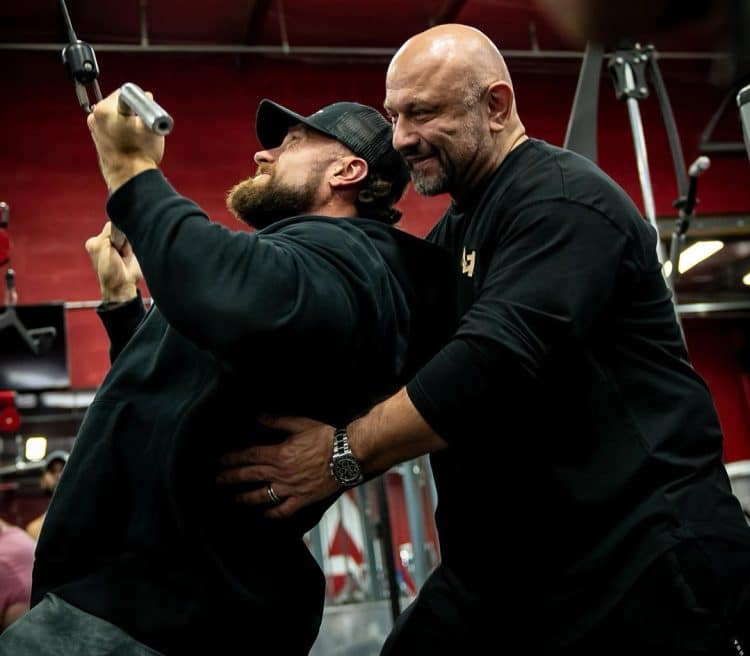
It’s okay to lower the weights
Doing seven high-rep sets after what has already been a grueling workout will be tough. Fatigue accumulates quickly, and what started out as manageable sets of 12-15 reps will soon become torturous sets of 5-6 reps.
The high reps are critical for getting a deep pump, so lower the weights for your final seven sets. It’s better to go light and finish all seven than go heavy and blow up after three.
Make your workouts progressive
Progressive overload is the key to successful bodybuilding training. It doesn’t matter how good your program is; if you don’t try to work a little harder week to week, your progress will soon stall.
So, keep track of your weights and reps and try to do more from one week to the next. Alternatively, you can reduce your rest periods between sets. Even small increases in workout intensity are beneficial and will add up over time.
Good form always
Leading on from the point above, it’s important you don’t try and force progression by using bad form, such as swinging the barbell up for the last couple of reps of curls. Poor form takes stress off the target muscles and puts it onto other parts of your body, which could result in injury.
Instead, use good form and a controlled tempo to ensure the target muscles work as hard as possible.
Use isolation or machine exercises for your pump sets
It would be too challenging to do something like seven sets of 12-15 squats at the end of what has already been a demanding leg workout. Your form would suffer, your cardiovascular system would blow up, and you’d probably end up puking.
For these reasons, it’s best to use isolation exercises for your finisher sets or, if that’s not possible, simple exercises you can do in spite of severe fatigue. Cable and machine exercises are good choices. Save the big, compound movements for the start of your workout.
Level Up Your Fitness: Join our 💪 strong community in Fitness Volt Newsletter. Get daily inspiration, expert-backed workouts, nutrition tips, the latest in strength sports, and the support you need to reach your goals. Subscribe for free!
Always do the seven sets at the end of your workout
Some people will be tempted to change the order of the exercises in FST-7. That would be a mistake. Doing the seven pump sets before your heavier exercises and sets will reduce the amount of weight you can lift and stop you from doing so many reps.
The pump is not enough to build muscle; you need plenty of mechanical tension, too, which comes from lifting heavy weights.
The seven light sets are the finisher that drives blood into the target muscle to stretch the fascia. It’s the icing on the cake and not the cake itself. Keeping the food similes going, the heavy sets are your meat and potatoes, while the seven light sets are your gravy.
And speaking of food…
Nutrition for FST-7
Building muscle requires energy and nutrients, and that means you need to put back into your body what your workouts take out. As such, sleep and nutrition are just as important as training if you want to add slabs of muscle to your frame.

While it’s beyond the scope of this article to provide you with a bodybuilding diet, we can share Hany Rambod’s recommendations for fueling your FST-7 workouts:
Pre-workout nutrition
While fasted training is all the rage, Rambod does not recommend it with FST-7. Instead, he stresses the importance of a good quality pre-training meal, so you’ve got plenty of energy to power through your workout. Ideally, according to Rambod, you should eat two solid meals before working out, so plan on training later in the day.
He also suggests that lifters drink plenty of water to ensure they’ve got the fluids they need to maximize the pump. This makes sense, given that blood is approximately 90% water. A shot of pre-workout may also be beneficial.
Intra-workout nutrition
While Rambod does not suggest eating during your workout, he does recommend drinking more water. Lifters should aim to chug about a liter per hour of training or roughly two pints.
You could also mix in a scoop of branch-chain amino acids to get a jump on recovery, but this is purely a suggestion and not compulsory.
Post-workout
Like many bodybuilding and nutrition experts, Hany Rambod recommends that his clients consume a large protein and carb meal or shake shortly after their workout. This, he says, will kickstart the recovery and growth processes.
While there is nothing wrong with this strategy, it’s worth noting the research suggests that the post-training “anabolic window” is a myth, and you’ve actually got several hours in which to consume your post-training meal.
That said, consuming protein and carbs immediately after training “gets the job done,” and means you are less likely to forget to do it.
Consume adequate protein
Bodybuilding is a catabolic or destructive process, and you need protein to fuel anabolism or rebuilding. Failing to consume enough protein can hurt your recovery and limit your gains, negating your hard work in the gym. Avoid this by consuming plenty of protein each and every day.
Most people need about one gram per pound of body weight or two grams per kilo, but these are only rough estimates. Take the guesswork out of determining how much protein you need with our handy protein calculator.
Calorie surplus
You need more than protein to build muscle; you also need a calorie surplus. This means consuming more calories than you burn. Your body needs this extra energy to fuel your workouts and the muscle-building processes. Consuming too few calories will hamper your workouts, delay recovery, and reduce your gains.
Make sure you are consuming enough calories with our weight gain calculator. Track your food and macro intake to ensure you aren’t inadvertently sabotaging your progress.
FST-7 Workout Guide FAQs
Do you have a question about the FST-7 method or our FST-7 workouts? No sweat, bro, because here come the answers!
1. Who is the FST-7 method for?
FST7 is for experienced lifters who have hit a progress plateau and want to bust through it. It’s also excellent for bringing up lagging body parts. It’s a specialist hypertrophy training system and ideal for bodybuilders looking to take their workouts to the next level.
2. Does FST-7 work?
Nicknamed “The Pro Creator,” Hany Rambod has coached and advised bodybuilders for over 20 years. FST-7 is his training system, and he’s used it to great effect, securing a long list of podium places. His clients have won a total of 19 Olympia titles, which would strongly suggest that FST-7 works.
Does it work equally for everyone who uses it?
Probably not.
That’s because genetics, diet, recovery, and dedication/consistency all play a part in your training successes. Pro bodybuilders often use performance-enhancing drugs such as steroids, too.
However, given how well his clients have responded to FST-7, it could be the training method you need to take your physique to the next level.
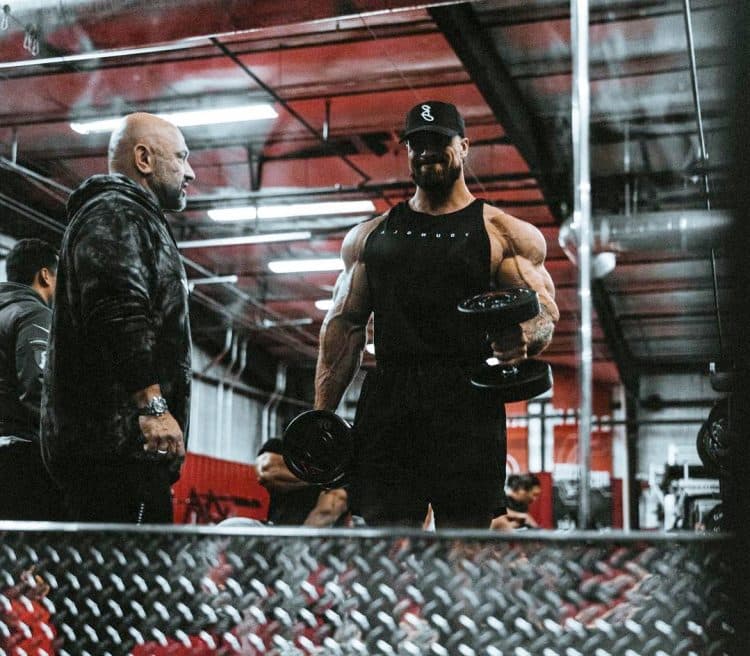
3. Who should NOT do FST-7?
FST7 is an advanced training system meant for experienced bodybuilders. If you haven’t been training consistently for at least a couple of years, it’s not for you. It’s also unsuitable for injured lifters, anyone coming back from a lay-off, lifters who cannot commit to training consistently, and anyone unable to prioritize their diet and recovery.
4. Can I do fewer pump sets as I get used to doing FST-7?
Because FST-7 is so intense, it might be prudent to ease yourself into it with fewer pump sets. For example, you could do:
- Week 1 – four pump sets
- Week 2 – five pump sets
- Week 3 – six pump sets
- Week 4 – seven pump sets
While even four high-rep, light weight sets with short rests will be challenging, it should be manageable for most lifters.
5. Can I do FST-7 for more than one body part?
Just because you can do something doesn’t mean you should! FST-7 is very intense and will probably be overkill if you try and use it for more than one major muscle group at a time.
That said, if you are getting plenty of sleep and your diet is 100% on-point, you MIGHT be able to use it for a major and a minor body part at the same time. For example, legs and biceps.
To try this for yourself, pick dissimilar muscle groups, i.e., not chest and shoulders, that are quite far apart. Also, avoid doing two FST-7 workouts on consecutive days.
Finally, monitor your progress and pay attention to your energy levels. If you feel tired and suspect you may be overtrained, you should cut back to just one FST-7 workout per week.
6. Can I do FST-7 during a cut?
FST-7 combines high volume with high intensity to bust through training plateaus and force stubborn muscles to grow. It takes a lot out of your muscles, and you’ll need to fuel them with plenty of protein, carbs, and calories to recover and grow.
While you don’t need to be on a mega-bulk diet to benefit from FST-7, it will be far less effective if you don’t have a caloric surplus. It probably won’t work at all if you are cutting.
So, train hard, eat up, and enjoy gaining muscle with FST-7.
Wrapping Up
If you always do what you have always done, you’ll always get what you have always got! While that might sound like some kind of Zen tongue twister, it actually explains why so many bodybuilders end up stuck in a training rut: they don’t change their workouts often enough.
While there is nothing wrong with designing your own bodybuilding training plan, this often involves a lot of trial and error, and your training may not always produce the results you want. Your time and energy are limited, so you may prefer to use a more tried-and-tested workout plan.
FST-7 is certainly a proven program and has been used by pro bodybuilders and even multiple Mr. Olympia winners. As such, it’s safe to say it works.
However, it IS an immensely tough training system and may be too much for some lifters.
That said, you’ll never know unless you give it a try. So, if you are stuck in a rut or have a weak body part that you want to improve, why not give FST-7 a try? Who knows? It could be the key to unlocking your true bodybuilding potential.
References
- Zügel M, Maganaris CN, Wilke J, Jurkat-Rott K, Klingler W, Wearing SC, Findley T, Barbe MF, Steinacker JM, Vleeming A, Bloch W, Schleip R, Hodges PW. Fascial tissue research in sports medicine: from molecules to tissue adaptation, injury and diagnostics: consensus statement. Br J Sports Med. 2018 Dec;52(23):1497. doi: 10.1136/bjsports-2018-099308. Epub 2018 Aug 2. PMID: 30072398; PMCID: PMC6241620. https://www.ncbi.nlm.nih.gov/pmc/articles/PMC6241620/
- Arent SM, Cintineo HP, McFadden BA, Chandler AJ, Arent MA. Nutrient Timing: A Garage Door of Opportunity? Nutrients. 2020 Jun 30;12(7):1948. doi: 10.3390/nu12071948. PMID: 32629950; PMCID: PMC7400240. https://pubmed.ncbi.nlm.nih.gov/32629950/


